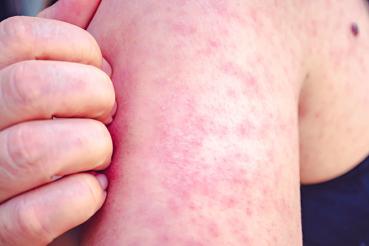Halloween is most often associated with sweet treats — and lots of them. For many of us, it also kicks off a holiday season filled with excessive eating and drinking, which is why the average American gains one to four pounds between October 31 and January 1.
But Halloween doesn’t have to mean overindulgence, says clinical dietitian Jennifer Ventrelle, MS, RDN, CPT. She offers five tips to help you and your family enjoy the spooky spirit of the holiday without the guilt-inducing gluttony.
5 tips for getting spooky without splurging
1. Stick to the norm.
Ask yourself how often you have treats like candy when it's not Halloween season, and try not to exceed that amount just because it's a holiday. As much as possible, try to replace your indulgences rather than increasing them — so if you normally have dessert three nights a week, trade those three desserts for small portions of your favorite Halloween treats.
If you do overdo it, though, don't beat yourself up.
"I always tell people it's OK if you indulge a little bit on the actual holiday, but then go back to your normal eating habits until the next planned special occasion," Ventrelle says. "Don't look at the time between Halloween and New Year's Eve as an excuse to go on a 10-week nonstop binge."
2. Make mindful choices.
Most food-related impulses last around three minutes, and then they go away.
So before acting impulsively and inhaling that Snickers bar, pause for three minutes and ask yourself a few simple questions: Is it your favorite treat and, therefore, a must-have? Are you really hungry, or will you be eating the treat simply because it's there? Might it be better saved for another time when you've consumed fewer calories?
"The answers to these questions might still lead you to eat the treat, but at least you will have made a mindful choice rather than an impulsive one," Ventrelle says. "And making conscious choices each time you're faced with temptation is likely to reduce your consumption, because even if you say yes now, you might choose to say no next time."
3. Keep candy out of sight — so it'll be out of mind.
Never leave leftover candy visible throughout the day. Research has shown that when tempting foods are stored in inconvenient locations (e.g., that hidden cabinet above the refrigerator) instead of plain sight (the candy dish on your desk, for instance), you will consume significantly less.
But the best way to avoid overindulging is to simply get rid of leftovers altogether.
"It's a good idea to set limits in advance," Ventrelle says. "Allow yourself and your kids a specific amount of candy or other treats on Halloween, and perhaps set aside a few additional treats for the kids to enjoy the week or so after Halloween. Donate the rest to a food shelter or put it in the break room at work, where it will disappear quickly."
4. 'Taste energy, waste energy.'
Food supplies our energy, but humans need only so much energy to function properly.
"At the prevention center we use the phrase 'taste energy, waste energy,' meaning any excess energy (calories) 'tasted' (consumed) can very easily be 'wasted' (burned off through physical activity) to avoid weight gain and related health issues, such as diabetes, heart disease and high blood pressure," Ventrelle says.
On and around Halloween, if you know you'll be consuming more calories than usual, ramp up your exercise routine. Spend an additional 20 minutes on the treadmill, sign up for an extra aerobics class, or just try to walk and move around more throughout your day.
In fact, taking your kids trick-or-treating is a great way to get in some extra walking. Take a pedometer with you to see how many steps you can get in.
I always tell people it's OK if you indulge a little bit on the actual holiday, but don't look at the time between Halloween and New Year's Eve as an excuse to go on a 10-week nonstop binge.
5. Start your own healthy Halloween tradition.
Gather the family and plan something fun and active that you can do together, like visiting a farm where you can pick pumpkins or apples and pet animals, or going for a bike ride or hike in the forest preserve.
Or try hosting your own Halloween party with healthy fare — apple slices with peanut butter, whole grain crackers with low-fat cheese, whole wheat pita and hummus, raw or cooked veggies, pumpkin soup, apple cider, fruit salad, etc. — and games or crafts that shift the focus away from food: paint or carve pumpkins, plan a scavenger hunt, have a best costume or dance contest. Your guests will have so much fun, they won't miss the calorie-packed treats.




